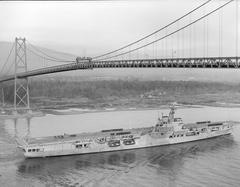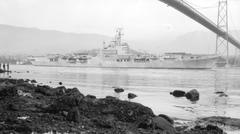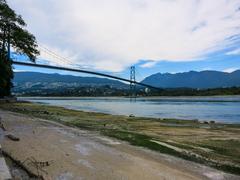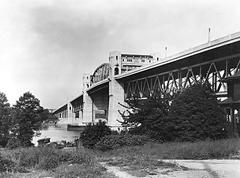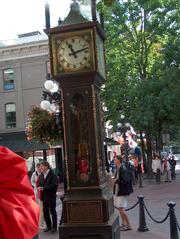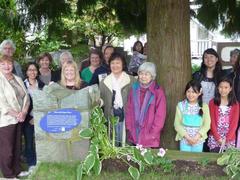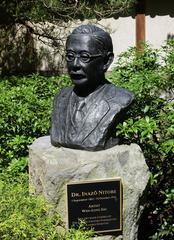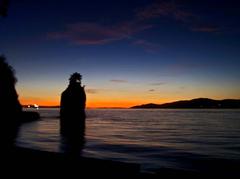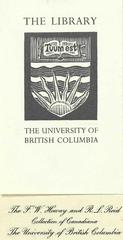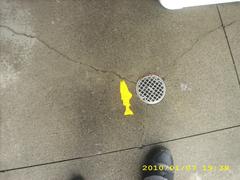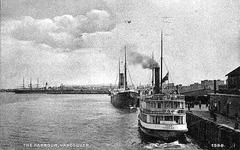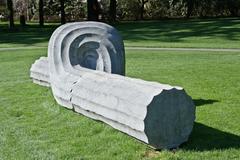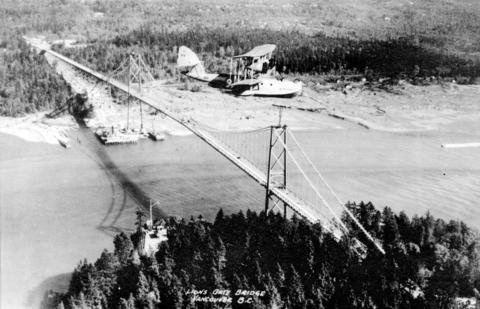
Visiting Lions Gate Bridge in Vancouver: Hours, Tickets, and Historical Info
Publication Date: 23/07/2024
Introduction to Lions Gate Bridge
The Lions Gate Bridge in Vancouver, Canada, stands as a testament to engineering marvel and cultural heritage. Spanning the Burrard Inlet, this iconic suspension bridge connects the bustling city of Vancouver with the scenic North Shore, offering a vital transportation link and a historical landmark rich in stories and significance. Conceived in the early 20th century and brought to life by the financial backing of the Guinness family, the bridge has played a crucial role in the urban development of the region since its completion in 1938. Today, it continues to be an essential artery for over 60,000 vehicles daily, while also attracting tourists and locals with its breathtaking views and historical allure. Whether you are a history aficionado, a photography enthusiast, or a casual traveler, the Lions Gate Bridge offers a unique blend of architectural beauty and cultural significance, making it a must-visit destination in Vancouver. For a detailed guide on its history, visiting hours, travel tips, and more, read on (Vancouver Heritage Foundation, Structurae).
Contents Overview
- Introduction
- History of Lions Gate Bridge, Vancouver, Canada
- Early Proposals and Planning
- Financing and Construction
- Opening and Early Years
- Structural Enhancements and Renovations
- Visiting Hours and Ticket Information
- Travel Tips
- Best Time to Visit
- Photography Spots
- Nearby Attractions
- Accessibility
- Cultural and Historical Significance
- Environmental and Social Impact
- Modern-Day Usage and Legacy
- FAQ
- Conclusion
- Call to Action
History of Lions Gate Bridge, Vancouver, Canada
Early Proposals and Planning
The idea of constructing a bridge to connect Vancouver to the North Shore dates back to the early 20th century. Initial proposals emerged around 1890, but it wasn’t until the 1920s that serious discussions began. The primary advocate for the bridge was Alfred James Towle Taylor, a prominent Vancouver businessman who saw the potential for economic growth and urban expansion. Despite his efforts, the project faced significant opposition from various groups, including local residents and environmentalists concerned about the impact on Stanley Park.
Financing and Construction
The financial backing for the Lions Gate Bridge came from the Guinness family, known for their brewing empire. In 1933, the Guinness family purchased 4,000 acres of land in West Vancouver, which they intended to develop. To facilitate access to this land, they agreed to finance the construction of the bridge. The project received approval from the Canadian government in 1936, and construction began shortly thereafter.
The bridge was designed by the Montreal-based firm Monsarrat and Pratley, with the construction contract awarded to the British Columbia Toll Highways and Bridges Authority. The total cost of the project was approximately $5.8 million CAD, a significant sum at the time. Construction officially commenced on March 31, 1937, and the bridge was completed in just over two years.
Opening and Early Years
The Lions Gate Bridge was officially opened on November 14, 1938, by King George VI and Queen Elizabeth during their royal tour of Canada. The bridge was initially a toll bridge, with a fee of 25 cents per car. The toll was intended to recoup the construction costs, but it was eventually removed in 1963 after the costs were fully recovered.
In its early years, the bridge played a crucial role in the development of the North Shore, facilitating the growth of residential areas and boosting local economies. The bridge’s Art Deco design and impressive engineering quickly made it an iconic landmark in Vancouver.
Structural Enhancements and Renovations
Over the decades, the Lions Gate Bridge has undergone several renovations to address structural concerns and accommodate increasing traffic volumes. One of the most significant upgrades occurred between 1975 and 1976, when the bridge deck was replaced to extend its lifespan. This project involved the installation of a new orthotropic deck, which provided greater strength and durability.
In the late 1990s, the bridge underwent another major renovation to improve safety and traffic flow. This project, completed in 2001, included the widening of the bridge deck, the installation of a new seismic retrofit system, and the replacement of the original suspension cables. The total cost of these upgrades was approximately $135 million CAD. These enhancements have ensured the bridge’s continued functionality and safety for modern traffic demands.
Visiting Hours and Ticket Information
The Lions Gate Bridge is open to traffic 24 hours a day, seven days a week. As a public infrastructure, there is no ticket required to cross the bridge. However, if you’re interested in guided tours or specific events related to the bridge, it’s advisable to check with local tour operators for the latest information and pricing.
Travel Tips
- Best Time to Visit: Early mornings or late evenings are ideal for avoiding heavy traffic and enjoying the scenic views.
- Photography Spots: Stanley Park offers excellent vantage points for photographing the bridge. The Prospect Point lookout is particularly popular.
- Nearby Attractions: Don’t miss visiting Stanley Park, the Vancouver Aquarium, and Capilano Suspension Bridge Park, all located nearby.
- Accessibility: The bridge is accessible to pedestrians and cyclists via dedicated pathways. Ensure you follow safety guidelines when using these pathways.
Cultural and Historical Significance
The Lions Gate Bridge holds significant cultural and historical value for Vancouver and Canada as a whole. It is named after the “Lions,” a pair of mountain peaks visible from the bridge, which are themselves named after the lions in Trafalgar Square, London. The bridge has been designated a National Historic Site of Canada, recognizing its importance as an engineering marvel and its role in the development of the region (Parks Canada).
The bridge has also been featured in various films, television shows, and literature, further cementing its status as an iconic symbol of Vancouver. Its distinctive design and scenic location make it a popular subject for photographers and artists.
Environmental and Social Impact
The construction and subsequent expansions of the Lions Gate Bridge have had significant environmental and social impacts. The initial construction required the removal of a portion of Stanley Park, which sparked controversy and opposition from environmental groups. Over the years, efforts have been made to mitigate the environmental impact, including the implementation of measures to protect local wildlife and reduce pollution.
Socially, the bridge has played a vital role in connecting communities and facilitating economic growth. It has enabled easier access to the North Shore, promoting tourism and contributing to the development of residential and commercial areas. The bridge has also been a focal point for various social and political movements, including protests and demonstrations advocating for environmental protection and social justice.
Modern-Day Usage and Legacy
Today, the Lions Gate Bridge remains a critical transportation link in Vancouver, carrying over 60,000 vehicles daily. It continues to be a vital artery for commuters, tourists, and commercial traffic. The bridge’s legacy is evident in its enduring popularity and its status as a symbol of Vancouver’s growth and development.
Efforts to preserve and maintain the bridge are ongoing, with regular inspections and maintenance work to ensure its safety and longevity. The bridge’s historical and cultural significance is celebrated through various events and initiatives, including educational programs and heritage preservation efforts.
FAQ
What are the Lions Gate Bridge visiting hours?
The bridge is open to traffic 24/7. Pedestrian and cyclist pathways are also accessible at all times.
How much are tickets for the Lions Gate Bridge?
There are no tickets required to cross the bridge. It’s a public infrastructure.
What are some nearby attractions?
Nearby attractions include Stanley Park, the Vancouver Aquarium, and Capilano Suspension Bridge Park.
Conclusion
The Lions Gate Bridge is not only an engineering feat but also a testament to the vision and determination of those who advocated for its construction. Its history is intertwined with the growth and development of Vancouver, making it an enduring symbol of the city’s past, present, and future. Whether you’re a history buff, a photography enthusiast, or a casual traveler, the Lions Gate Bridge offers something for everyone. For more detailed information, you can visit the official website.
Call to Action
Stay updated with the latest travel tips and historical insights by following us on social media or downloading our mobile app Audiala. Don’t forget to check out our other posts on Vancouver’s historical sites and attractions.




